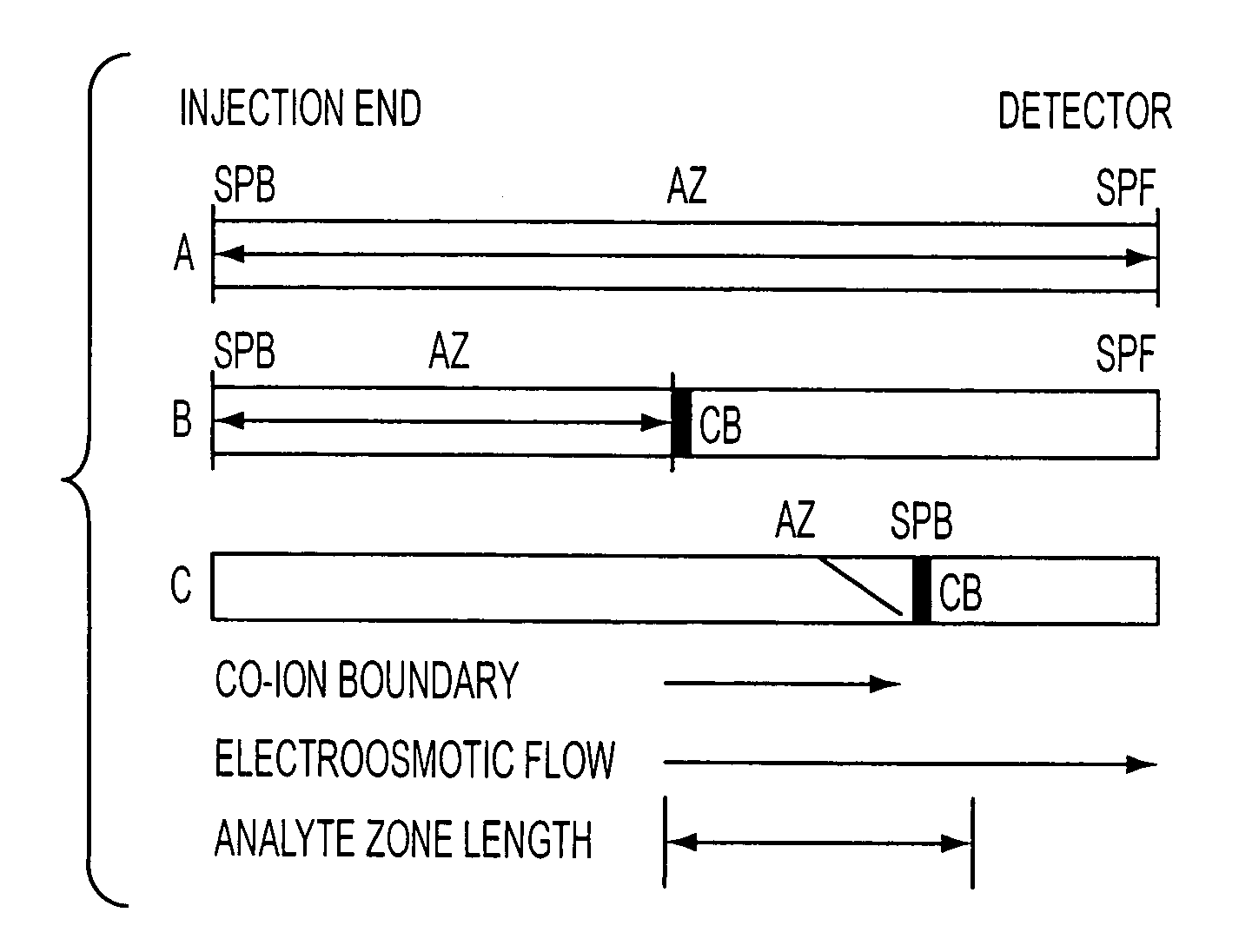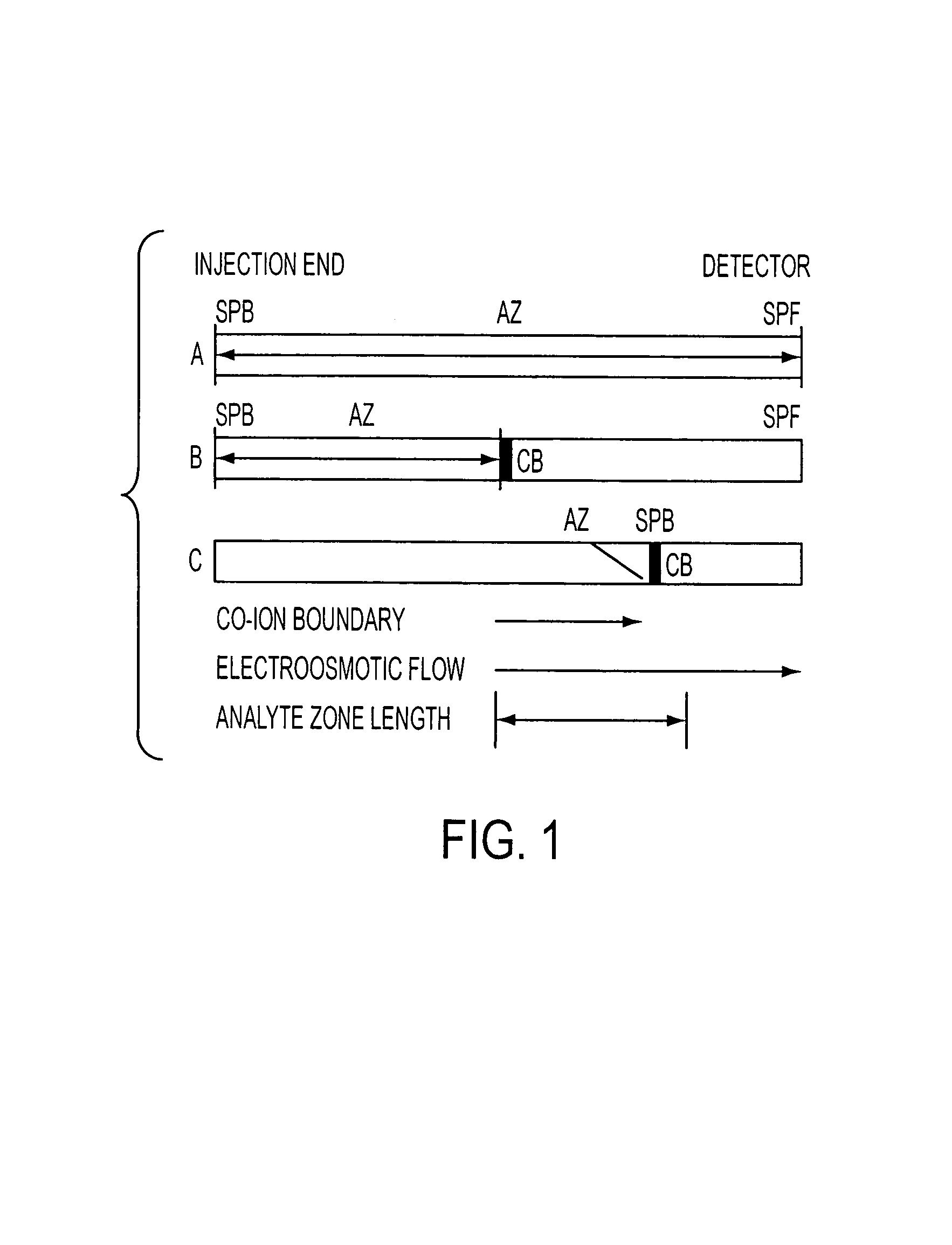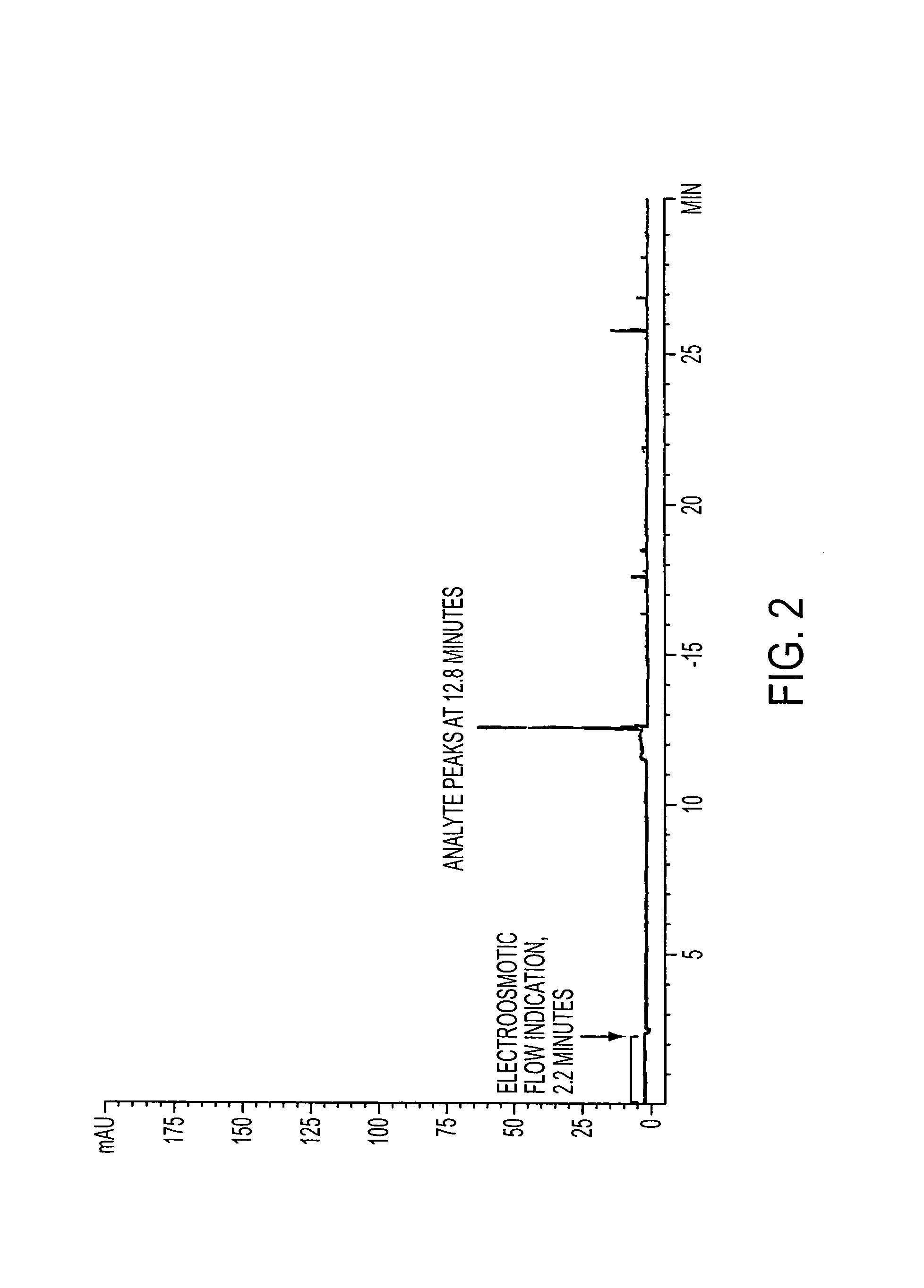Method for orthogonal analyte stacking/injection systems in electrophoresis
an electrophoresis and analyte technology, applied in the direction of liquid/fluent solid measurement, fluid pressure measurement, peptide, etc., can solve the problem that the high-resolution capabilities of capillary electrophoresis cannot be preserved, and many analytical detection systems are inadequate to detect analyte, etc. problem, to achieve the effect of faster and higher sensitivity injection mode, high resolution
- Summary
- Abstract
- Description
- Claims
- Application Information
AI Technical Summary
Benefits of technology
Problems solved by technology
Method used
Image
Examples
example no.1
EXAMPLE NO. 1
Mode for Carrying Out the Experiment—Example No. 1
[0097]With regards to the materials, HPLC-grade water (Fisher Company, St. Louis, Mo.) was used for all separation buffers and sample matrixes. Sodium tetraborate, sodium hydroxide, sodium chloride, and punctilious ethanol were obtained from Sigma Company (St. Louis, Mo.). Cholic acid, sodium salt hydrate, was obtained from Aldrich Chemical Company (Milwaukee, Wis.). Corticosteroids were obtained from Steraloids, Inc. (Newport, R.I.). BODIPY (4,4-difluoro-5,7-dimethyl-4-bora-3a,4a-diaza-s-indacene-3-propanol) was obtained from Molecular Probes Company(Eugene, Oreg.), and sodium fluorescein was obtained from Acros Company, New Jersey. Sodium dodecyl sulfate was obtained from Bio-Rad Laboratories (Hercules, Calif.).
[0098]With respect to the capillary electrophoresis, experiments with corticosteroid analytes were conducted with a Hewlett Packard HP 3D-CE instrument interfaced with a Hewlett Packard Kayak XA computer with HP...
example no.2
EXAMPLE NO. 2
Conclusions
[0130]Extreme attenuation of analyte zones is obtained by extended electrokinetic stacking injection in EKC. Separation buffer parameters were investigated to allow extended injection plug lengths with continuous conductivity sample matrixes. As analytes are injected by electroosmotic flow into the separation buffer, each analyte exhibits a decrease in velocity due to the interaction with the micelles in the separation buffer. To determine maximum-length injections, the velocity of each analyte / electrokinetic vector complex must be considered. Equations have been introduced to determine the maximum injection length per individual analyte / micelle complexes.
[0131]A simple relationship exists between the velocity of the electrokinetic injection vector and the resultant velocity of analytes that encounter an electrokinetic vector that imparts a mobility that is opposite that of the injection vector. This relationship determines the maximum injectable plug length....
PUM
| Property | Measurement | Unit |
|---|---|---|
| electric field | aaaaa | aaaaa |
| atmospheric pressure | aaaaa | aaaaa |
| atmospheric pressure | aaaaa | aaaaa |
Abstract
Description
Claims
Application Information
 Login to View More
Login to View More - R&D
- Intellectual Property
- Life Sciences
- Materials
- Tech Scout
- Unparalleled Data Quality
- Higher Quality Content
- 60% Fewer Hallucinations
Browse by: Latest US Patents, China's latest patents, Technical Efficacy Thesaurus, Application Domain, Technology Topic, Popular Technical Reports.
© 2025 PatSnap. All rights reserved.Legal|Privacy policy|Modern Slavery Act Transparency Statement|Sitemap|About US| Contact US: help@patsnap.com



